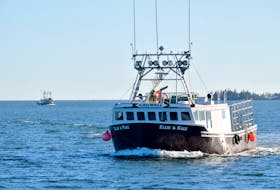TRURO, N.S. — Freezing weather forcing rats and mice indoors is keeping pest controllers busy across northern Nova Scotia this winter.
While business people and homeowners may have noticed more rodents in their buildings due to the early winter, Orkin Canada’s pest experts say it does not necessarily mean their population has increased.
“There could be hundreds or thousands in a house, if it’s left long enough in the right conditions,” said service manager Fraser Cameron, whose office covers northern Nova Scotia.
Rats can enter a building through a gap or hole the size of a loonie, while mice only need the size of a dime.
“If they can get their head in, that’s literally all they need,” said Cameron.
He added businesses and homeowners can prevent infestations by clearing away and properly disposing of garbage, removing any standing water, trimming lawns, hedges and trees to deny rodents shelter and keeping a clear gap of 18 inches around buildings’ foundations.
If a building is infested, pest controllers will first check its exterior for any gaps that can serve as entry points, including pipes, tree branches and electric wiring.
Next, Cameron’s colleagues will set traditional snap traps or use poison to kill off rats and mice.
Rats fear new objects, so pest controllers will leave a trap with food unbaited at first, then return days later.
Bigger traps are needed for rats, whose bodies typically measure about four to five inches, while their tails are eight to 10 inches long.
“The biggest one I’ve seen, he probably weighed a little more than a pound – he had a big tail,” said Cameron. “He was probably nine or 10 inches long. That was in Halifax, though.”
Most rats seen in Colchester County and elsewhere in northern Nova Scotia are Norway rats. Roof rats make up the rest.
Both rats and mice can carry a variety of diseases.
“We’ve had no recorded cases on any of our technicians from when I started about 11 years ago,” said Cameron. “Mind you, we take our proper precautions by wearing our personal protective equipment.”









